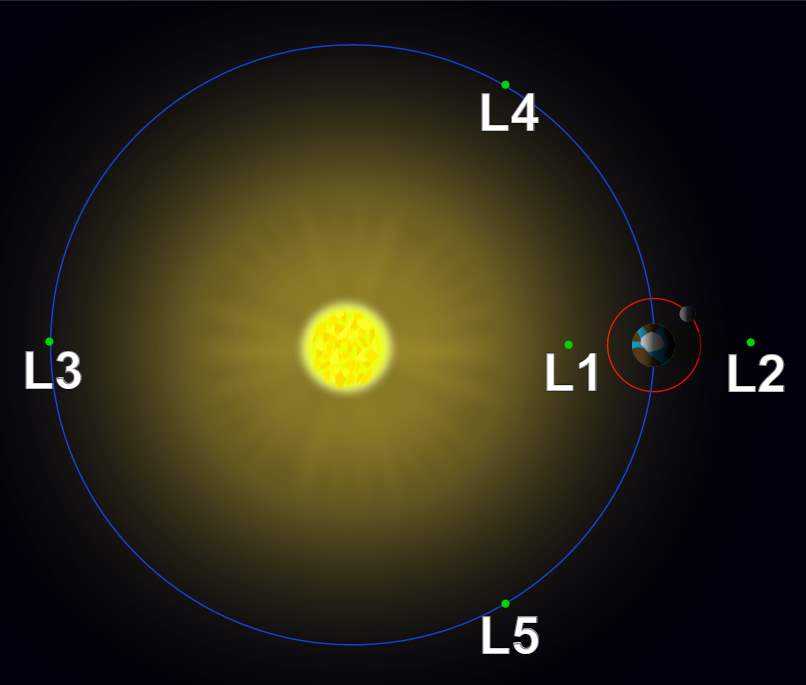On March 21, 2013, European Space Agency‘s (ESA) Planck spacecraft revealed the most detailed map ever created of the Cosmic Microwave Background (CMB, CMBR).
Today’s (March 21) story of what happened this day in Science, Technology, Astronomy, and Space Exploration history.
The Cosmic Microwave Background is the relic radiation from the Big Bang, faint cosmic background radiation filling all space. It is imprinted on the sky when the Universe was just 380,000 years old. The released map was based on the initial 15.5 months of data from the Planck spacecraft.
Planck spacecraft
Planck was a European Space Agency (ESA) mission with significant participation from NASA. The project was started around 1996. It was launched into space on May 14, 2009, and reached the Earth/Sun L2 point by July 2009 (the James Webb Space Telescope also operates there, see notes 1).
On March 21, 2013, the mission’s first all-sky map of the cosmic microwave background was released by the European Space Agency (ESA).
Overall, the information extracted from the Planck spacecraft’s map provided an excellent confirmation of the standard model of cosmology at an unprecedented accuracy, setting a new benchmark in our manifest of the contents of the Universe.
Also, because the precision of the Planck spacecraft’s map was so high, it also made it possible to reveal some peculiar unexplained features that may well require new physics to be understood.
At the end of its mission, the Planck spacecraft was put into a heliocentric graveyard orbit and passivated to prevent it from endangering any future missions. The final deactivation command was sent to Planck in October 2013.
The Planck consortium has made their final data release on July 17, 2018, including new processing of the cosmic microwave background temperature and polarization data. This legacy dataset confirms the model of an “almost perfect Universe”, with some remaining oddities giving researchers some intriguing details to puzzle over.

Cosmic Microwave Background (CMB, CMBR)
Also known as the “relic radiation”, the cosmic microwave background (CMB, CMBR) is electromagnetic radiation which is a remnant from a very early stage of the universe.
With a traditional optical telescope, the space between stars and galaxies (the background) is completely dark. However, a sufficiently sensitive radio telescope shows a faint background noise, or glow, almost isotropic, that is not associated with any star, galaxy, or other celestial objects.
This faint glow is strongest in the microwave region of the radio spectrum. The accidental discovery of the CMB in 1965 by American radio astronomers Arno Penzias and Robert Wilson was the culmination of work initiated in the 1940s and earned the discoverers the 1978 Nobel Prize in Physics.

The cosmic microwave background is it originated some 380,000 years after the Big Bang.
At this time, space was filled with a uniform glow of white-hot plasma particles – which consisted of protons, neutrons, electrons, and photons (light). Between 380,000 and 150 million years after the Big Bang, the photons were constantly interacting with free electrons and could not travel long distances. Hence why this epoch is colloquially referred to as the “Dark Ages”.
As the Universe continued to expand, it cooled to the point where electrons were able to combine with protons to form hydrogen atoms (aka. the Recombination Period). In the absence of free electrons, the photons were able to move unhindered through the Universe and the Universe began to appear as it does today (i.e. transparent and permeated by light). Over the intervening billions of years, the Universe continued to expand and cooled greatly.
Due to the expansion of space, the wavelengths of the photons grew (became “redshifted’) to roughly 1 millimeter and their effective temperature decreased to just above absolute zero – 2.7 Kelvin (-270 °C; -454 °F). These photons fill the Universe today and appear as a background glow that can be detected in the far-infrared and radio wavelengths.
March 21 in Science, Technology, Astronomy, and Space Exploration history
- 2013: European Space Agency’s (ESA) Planck spacecraft revealed the most detailed map ever created of the Cosmic Microwave Background (CMB, CMBR)
- 1864: Giovanni Domenico Cassini discovered Saturn’s moons Tethys and Dione on March 21, 1864
Notes
1. Lagrange Points
In celestial mechanics, the Lagrangian points are positions in an orbital configuration of two large bodies where a small object affected only by gravity can maintain a stable position relative to the two large bodies.
The Lagrange points mark positions where the combined gravitational pull of the two large masses provides precisely the centripetal force required to orbit with them. There are five such points, labeled L1 to L5, all in the orbital plane of the two large bodies. The first three are on the line connecting the two large bodies and the last two, L4 and L5, form an equilateral triangle with the two large bodies. The two latter points are stable, which implies that objects can orbit around them in a rotating coordinate system tied to the two large bodies.

Sources
- “Planck spacecraft reveals an almost perfect Universe” on the European Space Agency (ESA) website
- Planck spacecraft on Wikipedia
- Planck spacecraft on the NASA website
- Cosmic microwave background on Wikipedia
- Planck spacecraft and the Cosmic Microwave Background on the NASA website
- What is the Cosmic Microwave Background? on Universe Today
- Moon Landings: All-Time List [1966-2025] - February 2, 2025
- What Is Max-Q and Why Is It Important During Rocket Launches? - January 16, 2025
- Top 10 Tallest Rockets Ever Launched [2025 Update] - January 16, 2025
